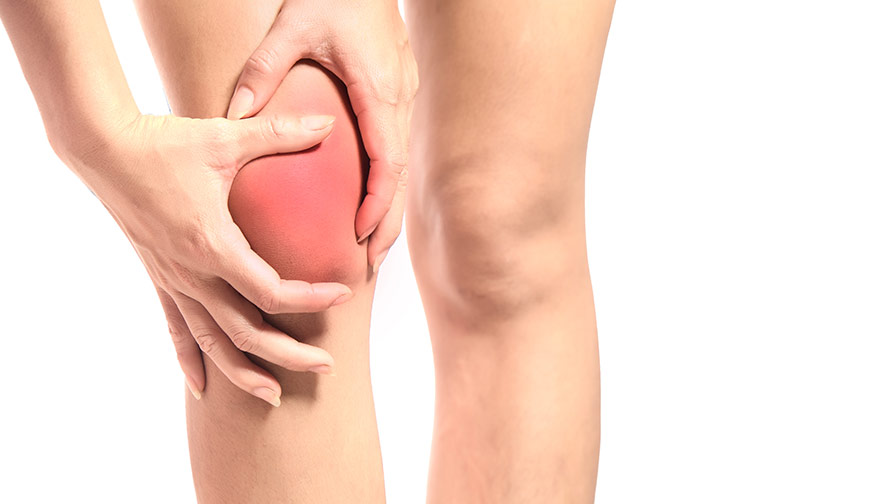ACL TEAR: Symptoms, Causes, Treatment, Prevention
Schedule Your
Appointment
Overview

Facts on ACL Tear
The anterior cruciate ligament (ACL) is the most commonly injured knee ligament.
Incidences of ACL Tears are estimated to be between 150,000 and 200,000 in the United STates every year.
More than 100,000 surgeries to reconstruct the ACL are performed every year in the United States.
An ACL Tear often occurs with sportspersons and women who wear high heels for long hours.
Signs and Symptoms of ACL Tear
When the ACL is injured or torn, you might hear a ‘popping’ sound and might feel like your knee has torn apart.
Other symptoms include:
- Swelling with pain – If your ACL is injured or torn, your knee will swell and you will face excruciating pain. In many cases, the swelling and the pain may subside on its own. But for people who plan to return to sports, it will be difficult for them to run or jump as the knee would be unstable. In that situation, the injury might worsen causing further damage.
- Loss of range of motion
- Discomfort while walking or moving
- Tenderness along the joint line
Causes of ACL Tear
- Awkward landing from a jump
- Sudden change in the direction of the body
- Pivoting with your foot firmly planted
- Suddenly stopping from a run
- Receiving a direct blow to the knee or collision
Types of ACL Tear or Injury
ACL Sprain Grade I
This is considered to be the most mild condition among all the types of ACL injuries. Patients suffering from this grade of injury can be treated without a surgery. This grade of injury occurs due to stretch of the ligament. Tears do not occur in this case.ACL Sprain Grade II
Grade II injury occurs when the fibers of the ligaments are partially torn. The symptoms include knee pain, swelling and tenderness. Treatment of the ACL in this grade depends on the age of the patient and degree of the damage.ACL Sprain Grade III
This grade of sprain mostly occurs among the athletes. The fibers of the ligaments are completely torn in this case. Symptoms of a Grade III sprain are frequently more severe. The tear in this grade of sprain can be treated only with reconstructive surgery.ACL Deficient Knee
The most prominent symptoms in this case is knee buckling, which can be felt while walking or running. In many cases, patients can live with ACL deficiency; the only thing that they need to do is reduce their physical activities.Diagnosis
Treatment
Ayurveda Treatment
According to Ayurveda, inflammation and immobility are the response of the human body to certain injuries. Ayurveda believes that herbal formulation and natural herbs are quite effective in treating joint related injuries. Herba can give faster results without causing any side effects to the body. There are several herbal supplements which can provide relief to joint injuries.- BOSWELLIA CURCUMIN CAPSULES – Boswellic acid present in shallaki is considered quite effective anti-inflammatory that helps to reduce stiffness and inflammation of joints or injuries in the joints.
- ASHWAGANDHA CAPSULES – Ashwagandha is considered to be a rich source of restoring properties which can boost the immunity. Ashwagandha can reduce excessive pain and inflammation of the knee joints with its anti-inflammatory properties.
- AAMVATANTAK CHURNA – Aamvatantak churna is a fine blend of ashwagandha, suranjaan, meth, gorkhmundi, haridra and sonth. These herbal products are known to strengthen bones and joints.
- JOINT AID PLUS – Joint aid plus is a combination of guggul, nirgundi, shallaki, ashwagandha and sonth. All these herbs are known for their anti-arthritic properties.
Surgery
The surgery to repair a torn ACL is known as ACL Reconstruction. During the process, the surgeon operates and removes the injured ligament and replaces it with a segment of tendon tissue. The tendon tissue works similar to that of a ligament which connects the muscle to bone. The surgeon will use a piece of tendon from another part of the knee or a tendon from a deceased donor. After the surgery, the patient can resume a rehabilitative therapy course for recovery. For recovery, you can do the following self care at home:- Icing
- Proper rest
- Use compression
- Keep your knee in elevated position
Home Remedies
Ice pack
Epsom salt bath
Castor oil massage
Leg strengthening exercises
Wearing a knee brace
Balanced diet
Omega-3 supplements
OTC medications
Complications
- Limping
- Risk of developing knee osteoarthritis
- Deterioration of joint cartilage
- Less range of motion
Prevention
Practice good technique – Proper technique of body movement can help ward off any injuries related to sports.
Do not work while your body is fatigued – If your body is tired, get some rest. Do not exert yourself into workout if you are suffering from fatigue.
Workout to develop muscles evenly – Core strength is extremely important. WOrkout to build muscles that can prevent your body from any injury.
Create balance between flexibility and strength – Stiff muscles are prone to injury. Workout to build strength and flexibility in moderate amounts.
Balanced diet – Make sure you eat a balanced diet. It will help you increase strength, attention and endurance.
Our Clinical Footprint

30000+
Happy Patients
10000+
Surgeries
100+
Doctors
70+
Clinics
20+
Cities
200+
Hospitals
Our Clinical Footprint

30000+
Happy Patients
10000+
Surgeries
100+
Doctors
70+
Clinics
20+
Cities
200+
Hospitals